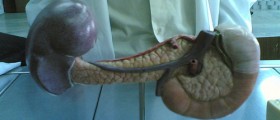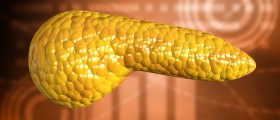
The pancreas is an organ found inall mammals and it plays a vital role for the proper metabolizing of sugar. However, it is also important for the proper digestion of food since one part of pancreas manufactures the hormone insulin, which regulates the blood sugar levels, while the other part secretes the pancreatic enzymes, which break down the eatenfoods. Acute pancreatitis is alife threatening pancreas disorder marked by its inflammation.
Causes of acute pancreatitis in dogs
Acute pancreatitis can be inducedeither by certain external or internal factors. There are certain medications that can be givento the dog for the treatment of some medical condition, and they may cause the occurrence ofacute inflammation of the pancreas. Furthermore, certain infection present inthe body of a dog may affect this organ as well.
Acute pancreatitis in dogs may be inducedby high levels of lipids and calcium in the blood. However, an injury, obesityand poor nutrition are the causes that most frequently lead to the appearanceof this condition in dogs. It is considered that the dogs fed withfoods rich in fats are the most susceptible to development of this acute condition.
Symptoms of acute pancreatitis indogs
When a dog develops acutepancreatitis, it may experience several symptoms which its owner will noticeeasily. Pain in the abdomen, distended abdomen and hunching of the body aresome of the most common warning signs that the dog suffers from acutepancreatitis. Furthermore, the dog may have fever,greasy stools and diarrhea. Vomiting, dehydration and depression are also thepossible symptoms of pancreatitis in dogs.
In severe cases, acute pancreatitisin dogs may cause heart problems, problematic breathing and probable hemorrhage. When the dog shows these symptoms, itis recommended to take it to the veterinarian who will diagnose thecondition and start with a proper treatment.
Diagnosis of acute pancreatitis indogs
Acute pancreatitis in dogs may bediagnosed by observing the symptoms, or after performing certain laboratorytests that show the dog has increased levels of certain enzymes and white bloodcells. Sometimes the X-rays or an ultrasound might be necessary in order to establishthe real condition of the pancreas. In order to stop vomiting and bringthe enzymes back to the normal levels, the dog should not consume normal foods,water or any drugs for a day. After that, the dog should eat low-fat foods, takecertain medicines to relieve the pain and drink lots of water to preventdehydration.

















Your thoughts on this
Loading...